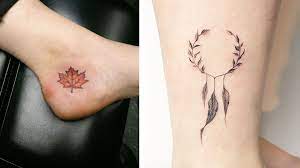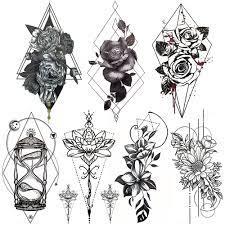- Colorful patterns can help make individuals stand out and express themselves uniquely.
- They can also convey certain moods or personalities.
- The cost of coloured tattoos will depend on many factors.
- Some of these factors are the shop and artist, the time and effort invested, the tattoo’s size and design, and the ink’s quality.

Time
- Color tattoos take longer and cost more than black ink tattoos.
- The size and complexity of the design also affect the time and cost.
- Larger, more intricate designs often need more colours and filling in.
- Color tattoos allow people to express themselves visually through body art.
- Some people pursue colour tattoos out of passion and don’t mind spending more on artwork representing who they are.
- Tattooing yourself requires time, money and care.
- You must choose a design carefully and pay for future retouches and aftercare costs.
- Therefore, saving for a tattoo will simplify the process.
Resources
- If you’re considering getting a colourful tattoo, you must understand all the factors affecting its cost.
- These include how much time and resources will be necessary and your desired design size.
- You should select colours that complement your skin tone and undertones.
- This will help you get optimal results and avoid fading or murkiness.
- Your tattoo artist should be an expert at blending colours and selecting those that stand out against your skin.
- They should also use tools like magnifiers to display colourful patterns and highlight areas needing extra focus.
- Finally, they should use high-quality ink that lasts over time and protects it from sunlight exposure.
Effort
- Tattooing yourself or someone else with colours requires extra work from you and the artist involved.
- Mixing and maintaining multiple hues may take longer and cost more than expected.
- Costly ink that won’t fade can also be an expensive investment.
- As mentioned above, one of the best ways to save money regarding colour tattoos is avoiding areas where it will likely fade quickly.
- These include areas like hands, feet, back, neck, or thigh exposed to direct sunlight for extended periods each day.
- This will also help you minimize the discomfort associated with your ink choice and application procedure.
Pain
- Tattoo pain generally depends not on the ink colour used but on other factors.
- These include the placement and design of the tattoo, your body’s tolerance, and the artist’s skill.
- Color tattoos tend to hurt more than black and grey tattoos.
- They also require different needles with sharp points that may cause more discomfort.
- Pain increases depending on the tattooist’s speed, depth and shading techniques.
- Designs composed of multiple colours require more colour to add depth and definition.
- This may lead to more significant discomfort.
- Tattooing can be a painful experience, but you can reduce its discomfort before and during your session by following some tips.

